Adding a fountain to your garden or patio is a great way to elevate your space and create a soothing atmosphere that can feel like an oasis in an otherwise busy world. But premade fountains can be pricey and often you won’t be able to find exactly the aesthetic you’re going for. If you love natural materials and classic lines, this DIY bamboo garden fountain tutorial is just the solution.
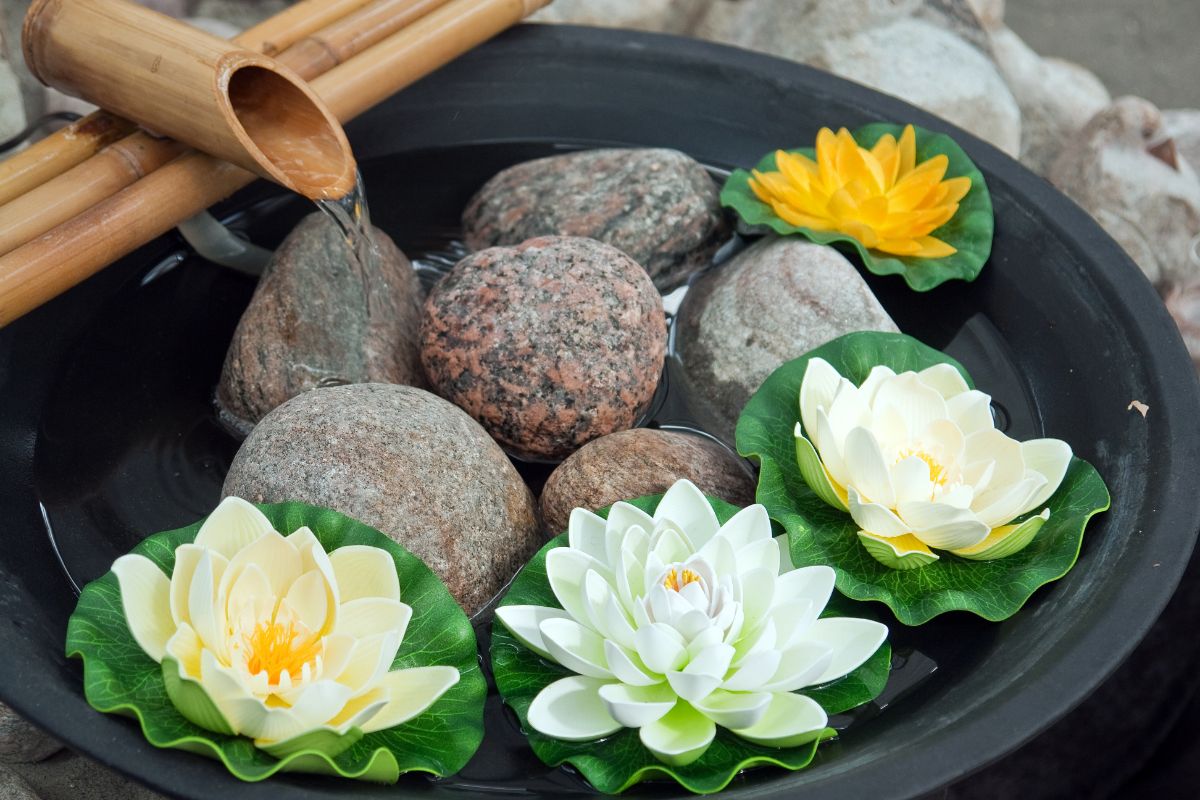
This guide will help you create your own homemade bamboo fountain for your backyard landscape and all you’ll need are a few simple supplies. With its organic, minimalist look, this fountain will complement any garden and lend a Zen-like feel to your space. Even better, the gentle flow of water is sure to attract local wildlife, like birds and pollinators, who will want to stop by for a refreshing drink.
What you’ll need
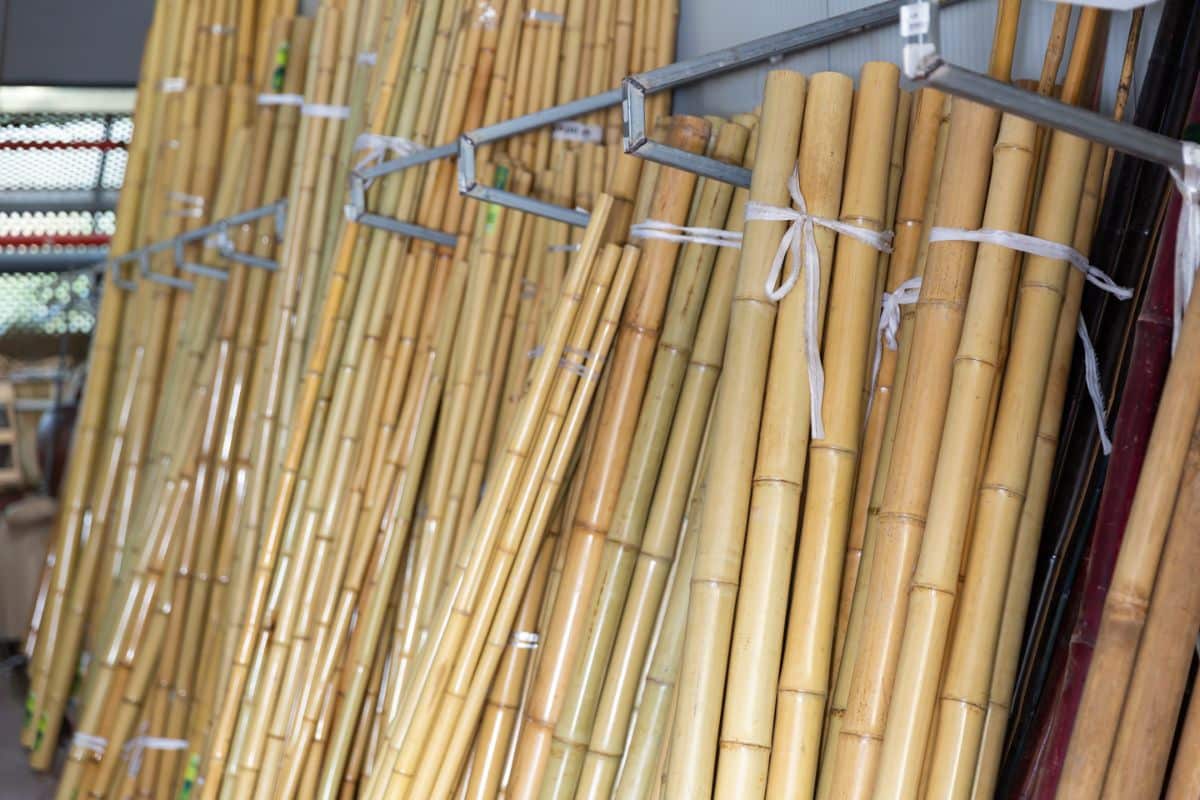
- Submersible pump with plastic tubing
- A water basin of your choosing. Whatever basin you pick, choose one that is made from a material that is safe for outdoor use and is appropriately sized to work with your submersible pump.
- 1 length of natural bamboo stem, approximately 3” diameter.
- A narrower piece of bamboo stem that should be around 1 ½ to 2” diameter. You’ll need a bamboo piece that’s at least 3 times as long as your water basin’s diameter. For example, if your basin is 12” diameter, you’ll need at least a 36” length of bamboo pole.
- One slim bamboo pole, approximately ¾ to 1” diameter
- Exterior grade super glue
- Plumber’s putty or caulk
- Handsaw
- River rocks
- Real or fake aquatic plants (optional)
- Wood clamp
- Electric drill with spade drill bit
- Sand paper
How to create your own DIY bamboo fountain
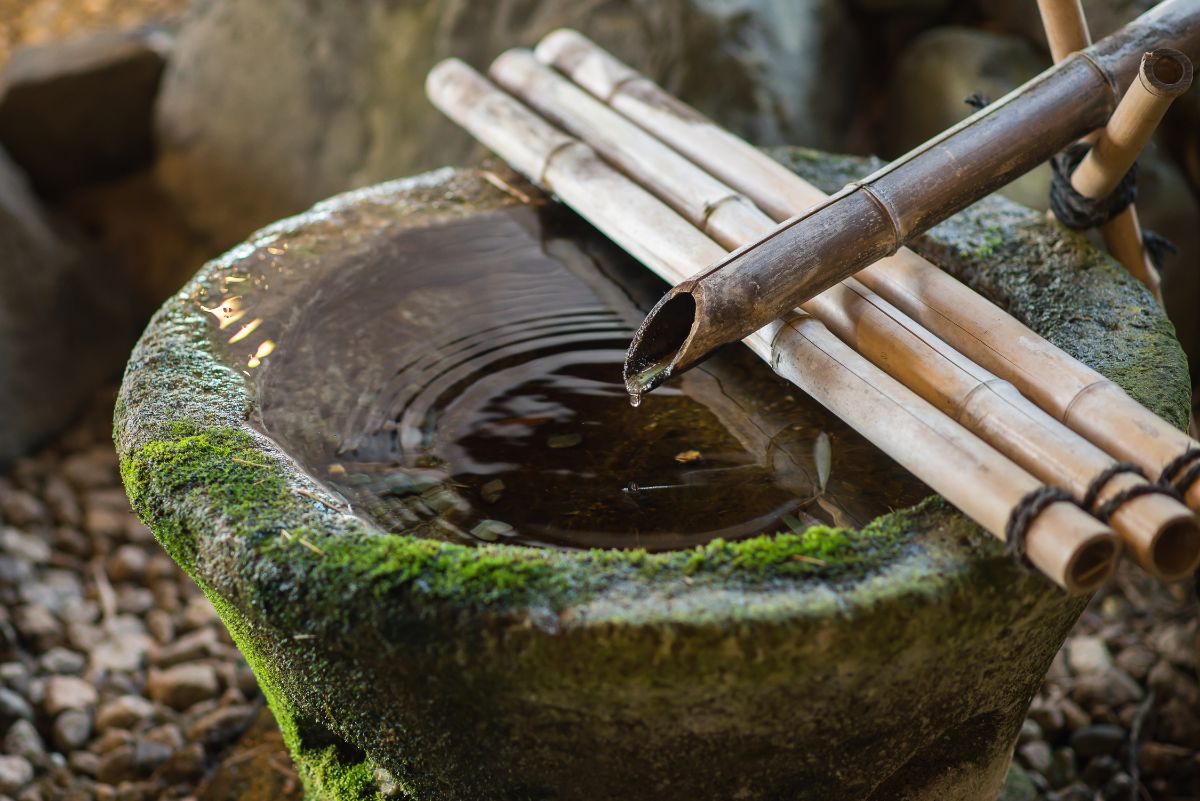
- To get started you’ll first want to cut the narrower, 1 ½ to 2” diameter piece of bamboo in 3 sections of equal length. These pieces will be placed across the rim of your water basin, so you’ll want to measure the diameter across your basin’s top and add a few inches to get your bamboo measurement length.
Secure your bamboo stem to a study surface using your clamps and then carefully cut each length of bamboo pole to size. For example, if your basin is 12” diameter, cut 3 lengths of bamboo pole that are about 16 to 17” long so they will extend beyond your basin’s rim a little bit.
- After cutting your bamboo lengths, sand each section of bamboo to remove any sharp or splintered edges.
- Now, on a flat surface, line up your bamboo lengths so that they’re side by side and then glue along their sides to adhere the three pieces together. This will create a shelf of sorts to extend across your water basin’s rim.
- To help strengthen your bamboo shelf, flip it over and add a few short lengths of your smallest diameter bamboo pole underneath. These sections of bamboo pole only need to be a few inches long and should be secured in between the wider sections of bamboo pole with super glue. When your shelf is in place on your fountain, these smaller pieces should not be visible.
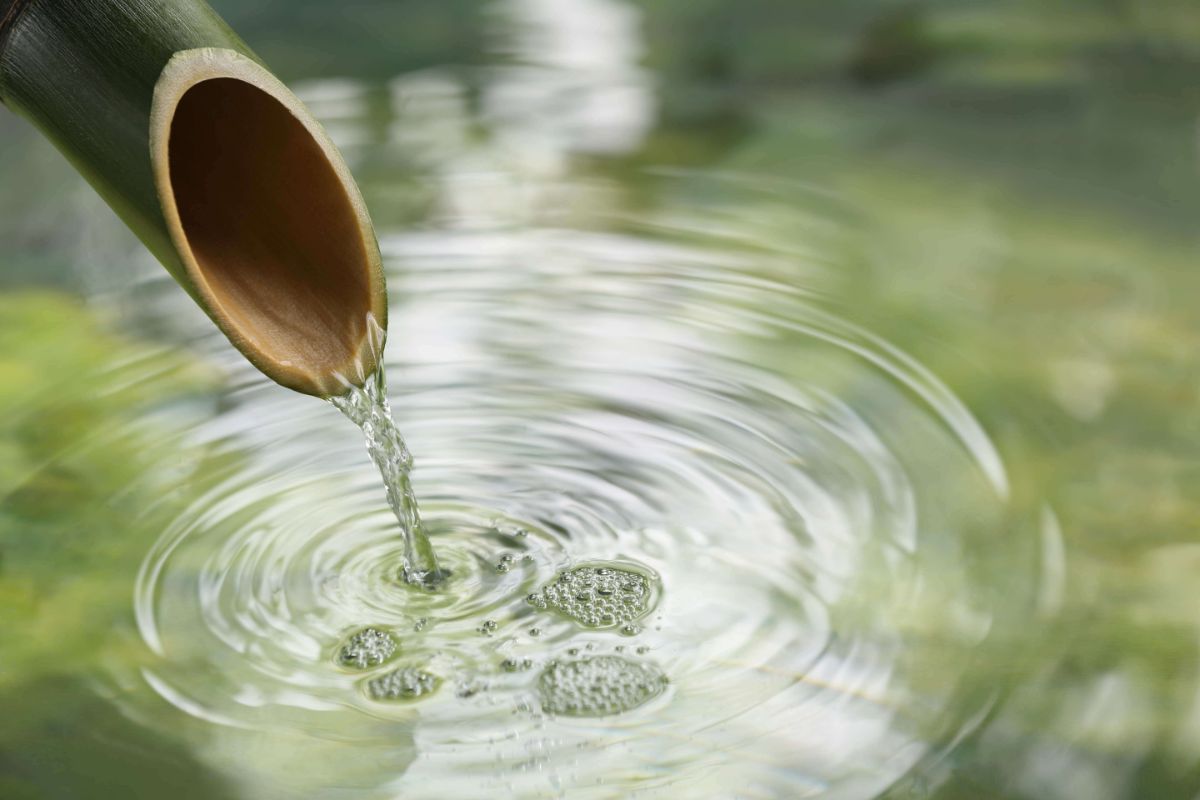
- Next, take your remaining section of bamboo pole. This piece should be slightly wider than the other bamboo, with a diameter of around 3” inches.Using your clamp again, secure this bamboo pole to your work surface and cut off each end of the pole at a slight angle. This section of bamboo will be placed across the top of the bamboo “shelf” you just made to form the spout of your fountain. For this reason, you’ll want to cut this wider bamboo piece so it’s slightly longer than your bamboo shelf’s width.
After cutting this piece, sand the edges smooth.
- To add the plastic pipe that will feed water into your bamboo spout, you’ll need to drill a hole using your spade drill bit.Measure the diameter of plastic tubing and drill a hole that’s slightly larger than your plastic tubing on the underside of your bamboo spout.
Sand the edges smooth.
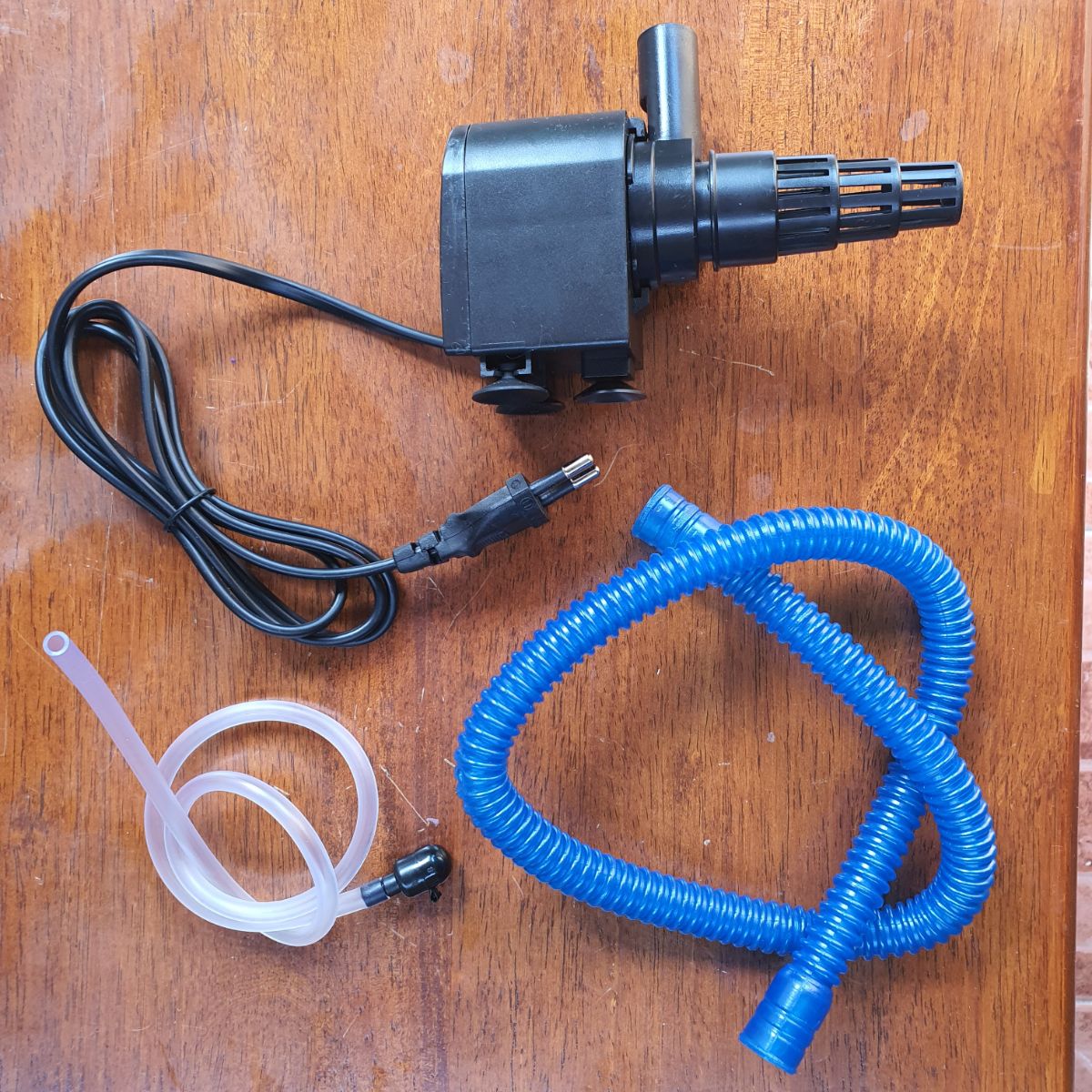
- Now it’s time to start assembling your fountain.To begin, feed your plastic tubing end into the hole you just made in your bamboo spout and then secure the tube in place with plumber’s putty, super glue or caulk. Because water will be flowing through this area, you’ll want a complete seal to direct water straight to the fountain’s spout.
- Once your plastic tube is in place and any adhesive you used is dry, glue the bamboo spout perpendicularly across your bamboo shelf. One end of the spout should extend beyond the shelf’s edge and towards the center of the fountain basin to direct water flow.For a more natural look, you can also place the spout slightly at an angle across the shelf -- it’s up to you.
- Secure your submersible pump to the bottom of your water basin. Most of the time, these pumps come with suction cups to keep them in place, but you may need to weigh it down with gravel too.Attach your plastic tube to your submersible pump, so that the pump is affixed to the bamboo spout, and then nestle the excess plastic tubing inside your water basin.
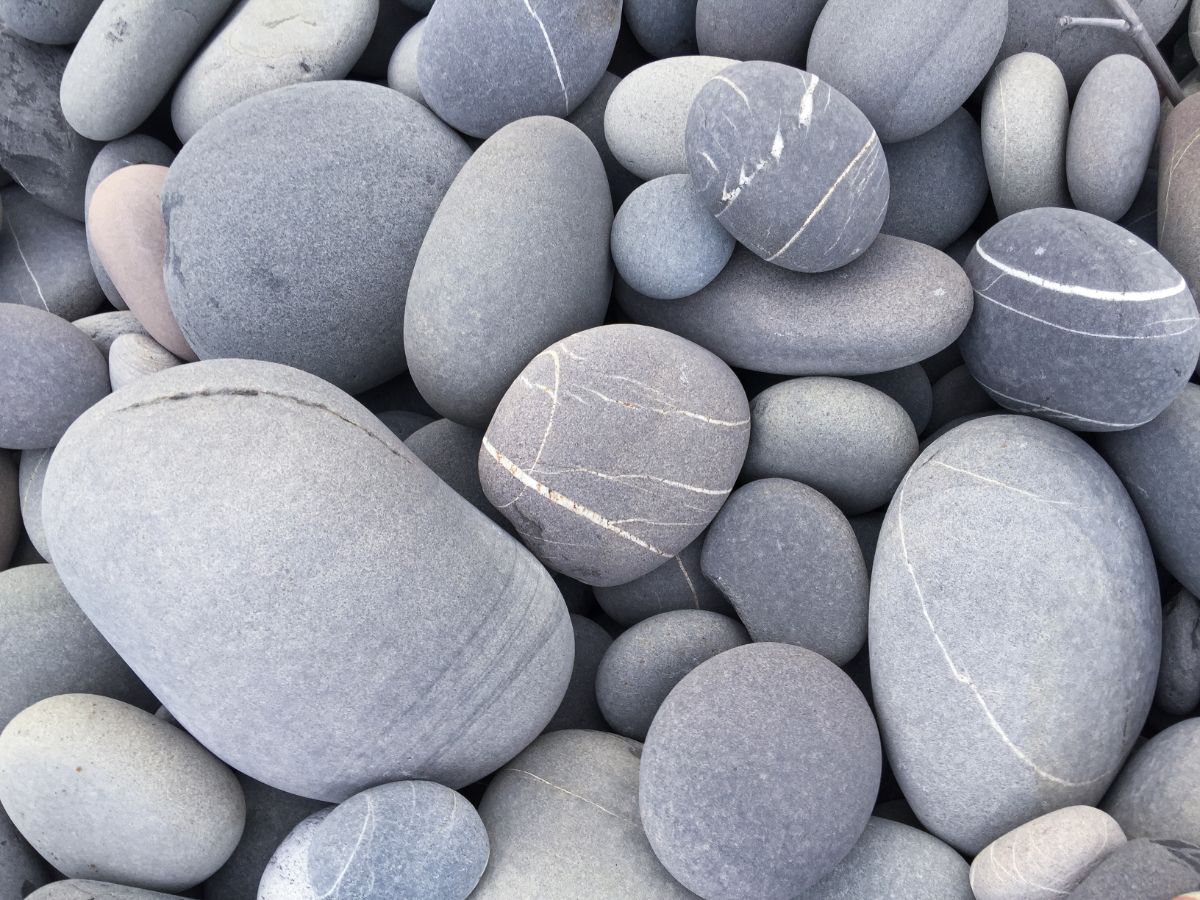
- After placing your pump, you’re ready to start decorating your fountain a little.
Depending on the aesthetic you’re going for, fill the bottom of your basin with river rocks, pebbles or sea shells – whatever works for you. Use these items to carefully conceal as much of the pump and plastic tubing as you can for a more finished look.
In addition to making your fountain more attractive, these rocks will also help add weight to your piece to stabilize it.
- Now that your rocks are in place, balance the bamboo shelf across the basin. At this point, your fountain should be pretty much assembled.
- Locate your fountain in a suitable location. You’ll want to choose a flat area of your lawn or patio and you’ll need access to an electrical outlet to power your pump.Once you’ve chosen a spot, double check that it’s level and then settle your fountain in place.
- Using your garden hose, fill up your water basin so that’s just about full. You can amplify your fountain’s trickling water sounds by leaving a bit more space between the water level and the top of your basin.
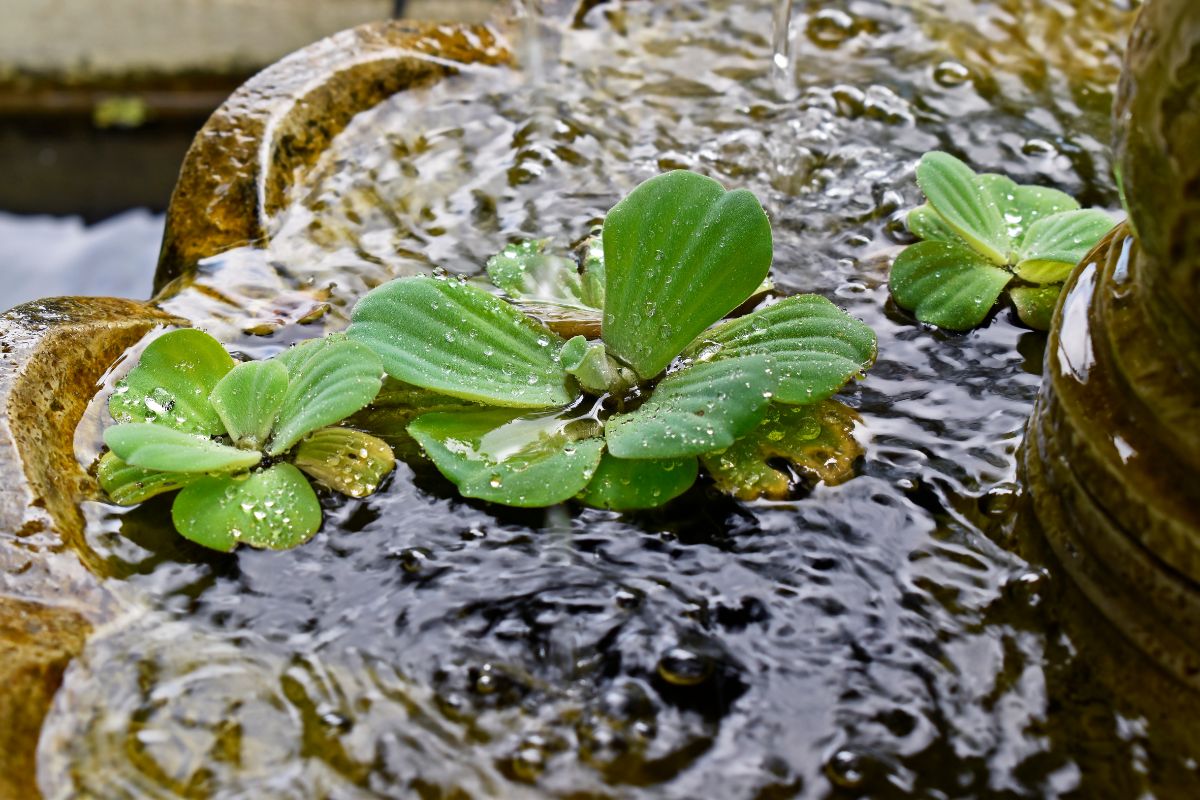
- If you’re using aquatic plants, either live or artificial, put them in place now.
- Then, all you have to do is plug your fountain in. Check that the pump is working correctly and that water is flowing evenly and you’re done!Give yourself a pat on the back for making your own minimalist DIY bamboo fountain!
Frequently asked questions
The best way to clean your fountain is with warm water, a bit of dish soap and a sturdy brush. Dump out the water in your basin and then scrub away any mildew or algae before rinsing out and refilling your fountain.
We recommend cleaning out your fountain every 3 months. This will help prevent algae and keep everything looking fresh.
Yes. Most fountain pumps are specifically designed to be left running and turning them on and off frequently can make them degrade faster. Only turn off your fountain for cleaning or if you’re planning to go away on vacation.
Yes. Water expands when it freezes and this can rupture your plastic tubing or break your water basin (depending on what it’s made out of). Before winter, drain your fountain and invert it or store it away in an outbuilding or garage until spring.
Scrubbing algae with a sturdy brush should do the trick, but you may also want to add white distilled vinegar to your fountain while cleaning. This will help break down the algae too. Just rinse out your fountain thoroughly before refilling it with fresh water.
Summary
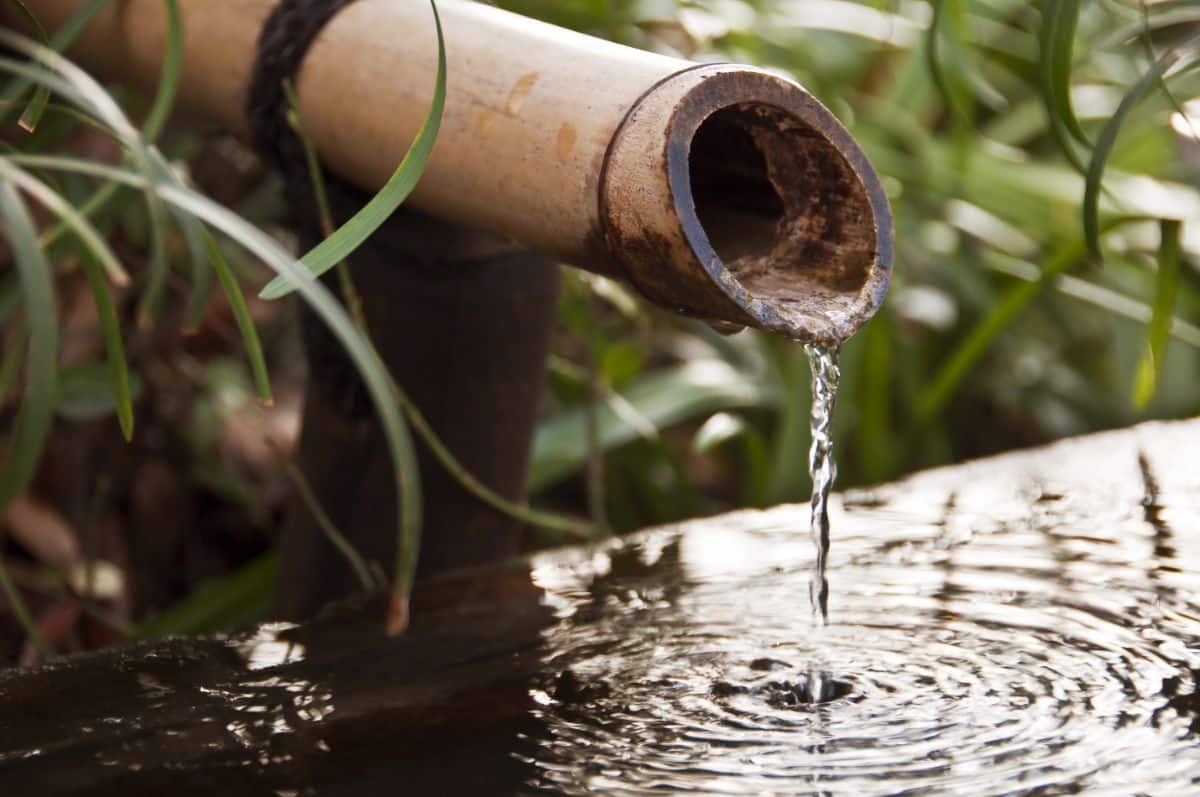
There are so many reasons to add a fountain to your backyard or patio. They are beautiful, add ambience and interest, can help cover up background traffic noise and will even encourage birds and other wildlife to visit your garden.
But while you can purchase a premade fountain, making your own DIY bamboo fountain is super simple. And, once you see how gorgeous this natural piece looks in your space, you’ll wish you had added a fountain sooner!
If you liked this article, check out our other DIY projects here!
References:
- No1 Ideas. 16 October 2018. DIY Bamboo Water Fountain. [Video.] YouTube.

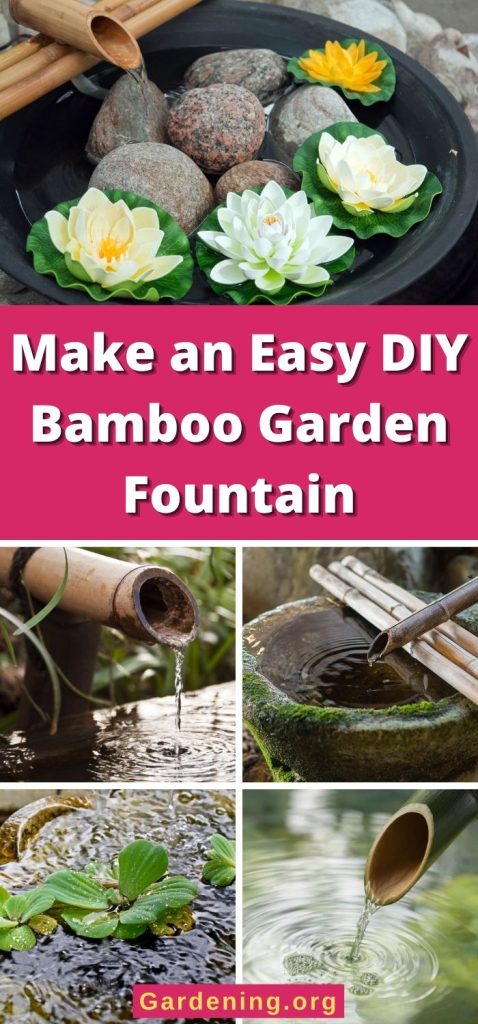
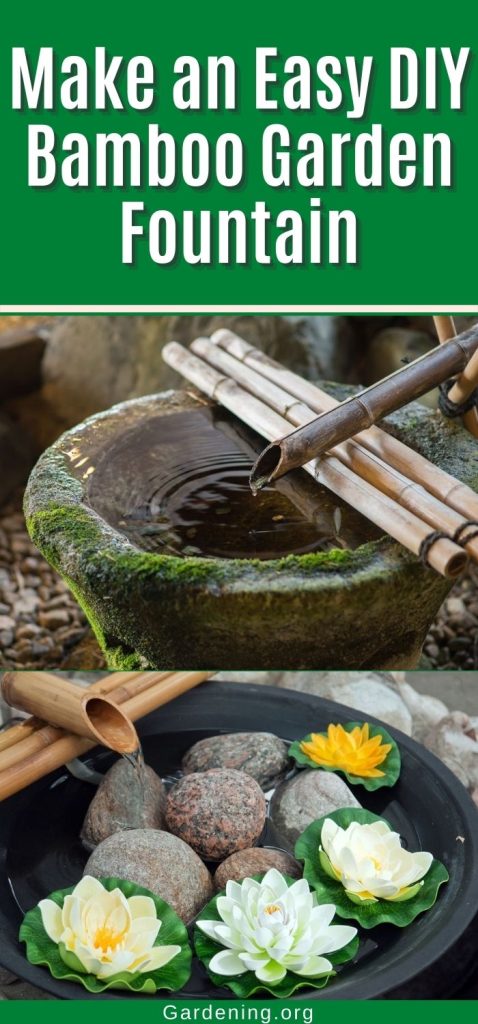
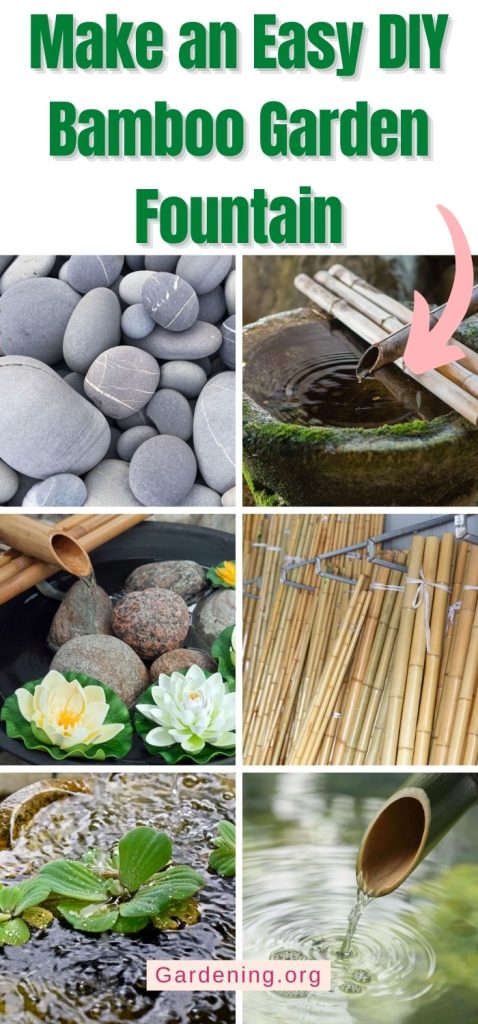
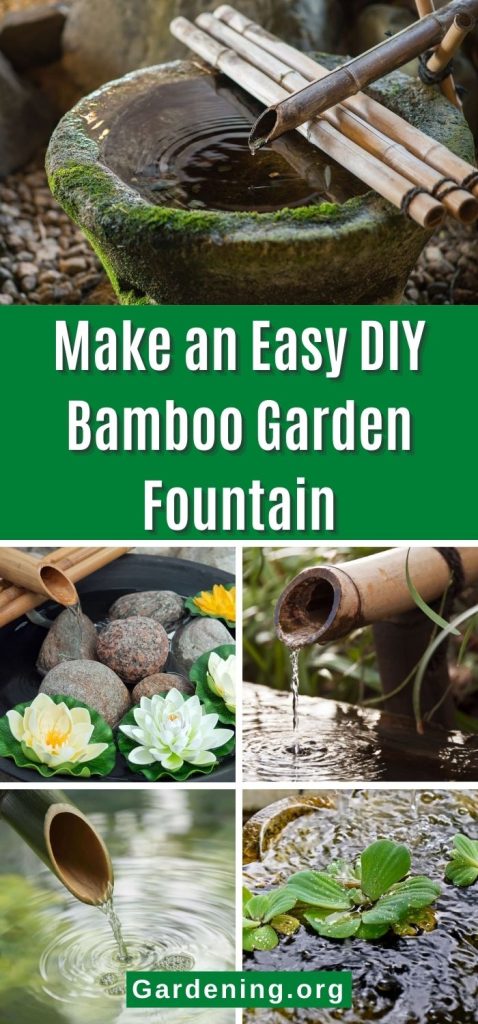
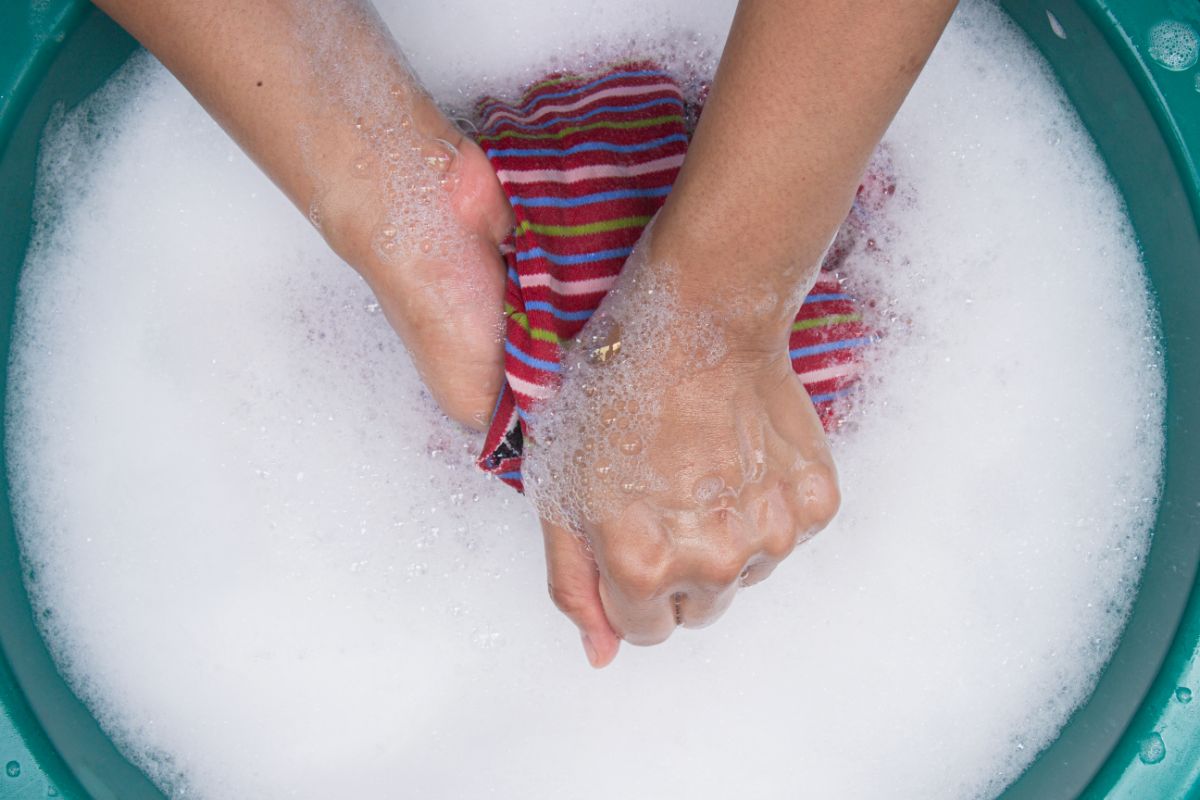

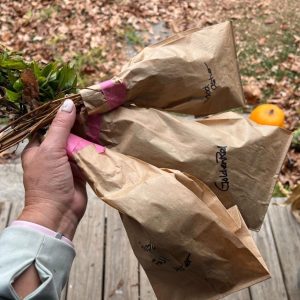
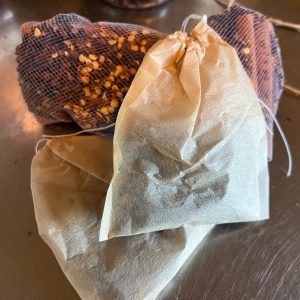
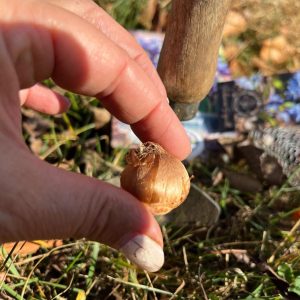
Leave a Reply